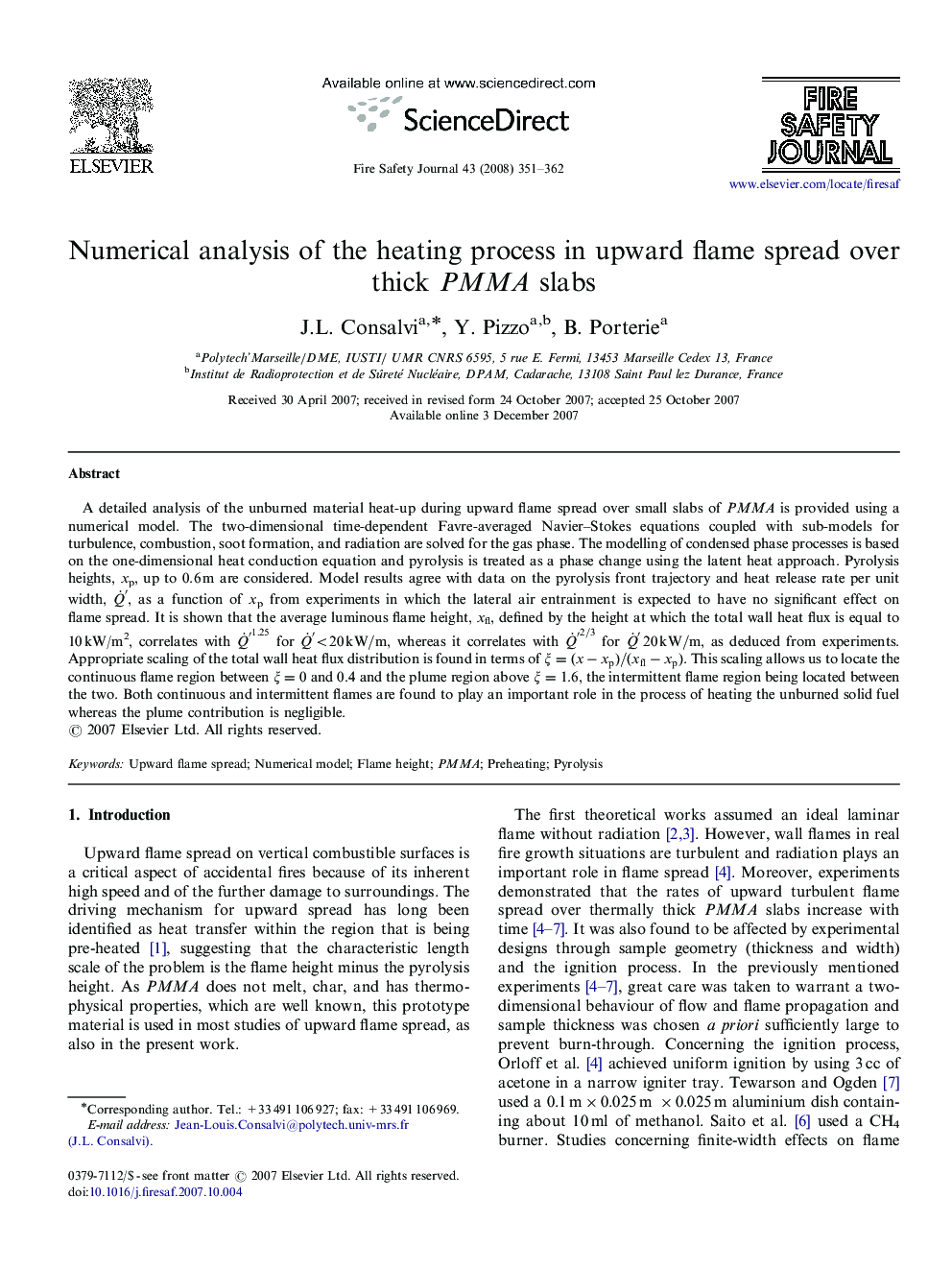| کد مقاله | کد نشریه | سال انتشار | مقاله انگلیسی | نسخه تمام متن |
|---|---|---|---|---|
| 270486 | 504759 | 2008 | 12 صفحه PDF | دانلود رایگان |

A detailed analysis of the unburned material heat-up during upward flame spread over small slabs of PMMA is provided using a numerical model. The two-dimensional time-dependent Favre-averaged Navier–Stokes equations coupled with sub-models for turbulence, combustion, soot formation, and radiation are solved for the gas phase. The modelling of condensed phase processes is based on the one-dimensional heat conduction equation and pyrolysis is treated as a phase change using the latent heat approach. Pyrolysis heights, xp, up to 0.6 m are considered. Model results agree with data on the pyrolysis front trajectory and heat release rate per unit width, Q˙′, as a function of xp from experiments in which the lateral air entrainment is expected to have no significant effect on flame spread. It is shown that the average luminous flame height, xfl, defined by the height at which the total wall heat flux is equal to 10 kW/m2, correlates with Q˙′1.25 for Q˙′<20kW/m, whereas it correlates with Q˙′2/3 for Q˙′20kW/m, as deduced from experiments. Appropriate scaling of the total wall heat flux distribution is found in terms of ξ=(x-xp)/(xfl-xp)ξ=(x-xp)/(xfl-xp). This scaling allows us to locate the continuous flame region between ξ=0 and 0.4 and the plume region above ξ=1.6, the intermittent flame region being located between the two. Both continuous and intermittent flames are found to play an important role in the process of heating the unburned solid fuel whereas the plume contribution is negligible.
Journal: Fire Safety Journal - Volume 43, Issue 5, July 2008, Pages 351–362